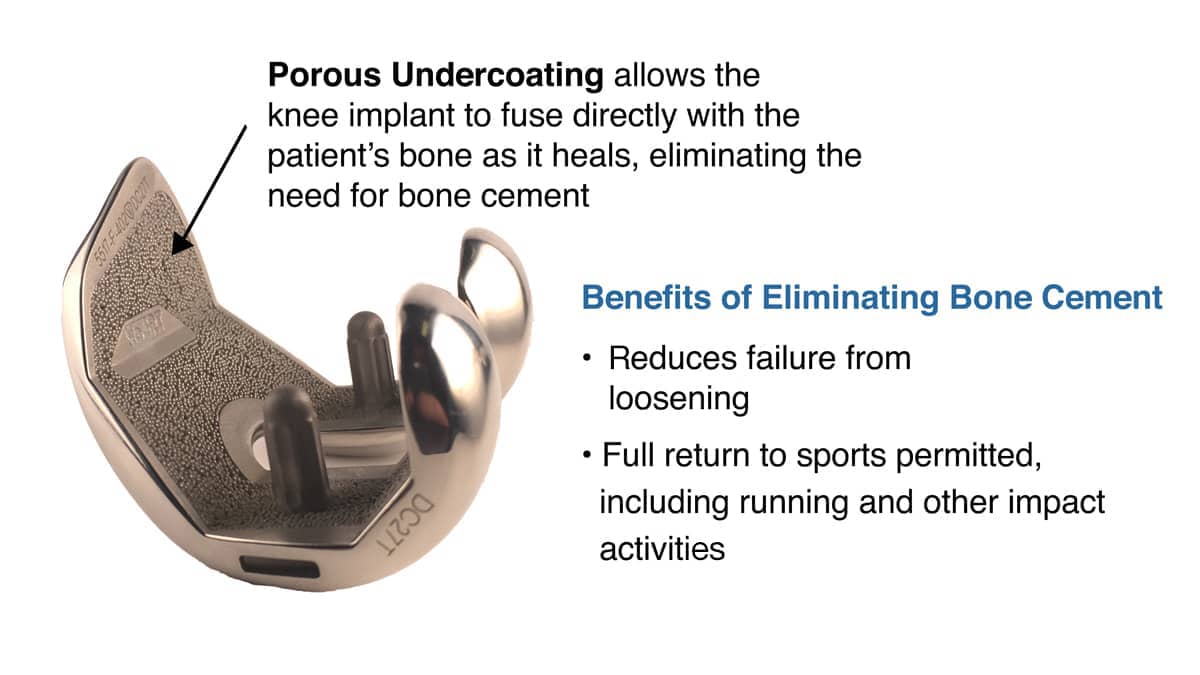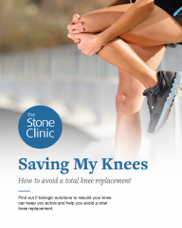Skiing Knees
If your knees hurt when you ski, you have to decide: Is its good hurt or bad hurt? Here is an abbreviated guide to both types of pain.

Dr. Stone practicing what he preaches
Nothing loads the front of the knees and the patellar tendons like skiing. When else is your body in a flexed knee position for multiple hours per day, absorbing the forces of moguls, bumps, and landings, combined with twisting, turning, flexing, and extending hundreds of times per hour? If you haven’t trained hard in the off-season, pain awaits.
Good pain is the soreness you feel early in the season. It’s mainly at the patellar tendon and hamstrings, which absorb the load and contract to hold the ski edge on the snow. This is the pain of deconditioning, and it improves with time on the snow. Good pain is the muscular soreness in the quads and calves as the forward-leaning ski boot position loads the muscles with each turn. Good pain responds to a little ice, stretching, warm baths before skiing, and massage afterward.
Bad pain varies by injury and location. Front of the knee pain—which is often accompanied by grinding and clicking of the kneecap—may indicate damage to the articular cartilage on the undersurface of the patella. If it only hurts when skiing, there are a number of therapies that often work well. These include (1) a patella sleeve that supports the kneecap, keeps the muscles warm and provides proprioceptive feedback; (2) Patellar stabilizing exercises; (3) Injections of lubricating fluid, which we now combine with growth factors that induce the joint lining to produce more lubrication (we have many patients with arthritic knees who come in for pre-ski season lube jobs); (4) A surgical repair of the damaged cartilage, which can be either a smoothing down of the frayed tissue or a paste grafting to regrow the missing cartilage; (5) A replacement of the surfaces with a metal and plastic implant called a patellofemoral partial knee replacement.
Bad pain on the inside of the knee—often accompanied by popping or catching, pain with squats, or pain when pushing off on the inside edge of the ski—can have a number of causes. These range from simple overloading (due to the shape of the legs) to the tearing of the meniscus shock absorber; from an injury to the articular cartilage to frank arthritis on the femoral or tibial surfaces.
If the pain is getting in the way of your enjoyment of activities, a careful exam, X-ray and MRI will help define the problem. Fortunately, in the 21st century, there is no reason to live and play with pain. Mild symptoms with little damage can be resolved with lubricating growth factor injections and rehab exercises. The meniscus is repairable and replaceable with donor tissue. Damaged articular cartilage can be repaired with articular cartilage paste grafts, while bone-on-bone arthritis can be relieved with partial knee replacement: an outpatient procedure that can have you back on your skis in three months.
Bad pain on the outside of the knee is similar to the inside, with the same therapies available.
Pain all around the knee—with X-rays that show bone-on-bone arthritis in multiple areas—may be unresponsive to rehabilitation and injections. This issue can be addressed by the reimagined and precise art of knee resurfacing. This is now done with robotic control and the absence of cement. The best implants allow the body to grow into the undersurface of the components, nearly eliminating any concern about loosening due to activities. With these new techniques, the more you ski the better you will do—with your knees, and in life.
If you are in pain, solve the problem promptly. Playing forever means enjoying each and every day. We used to issue prescriptions that said, Must ski powder. Now they just say, Must ski. But powder is always our preferred way to slide.
-
Read Skiing Knees: Part Two by Dr. Stone for guidance on how to deal with instability and important advice on ski binding design.
Here's How We've Helped Skiers Back to the Slopes with our BioKnee program
Or hear the remarkable story from professional ski instructor Angela who saved her skiing career with a double partial knee replacement in one knee
Experiencing knee pain that's restricting skiing? Use our Knee Pain Symptom Checker to learn more about your injury and our biologic solutions to repair skiers' knees.



